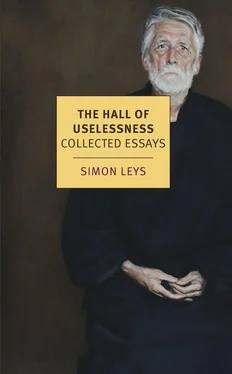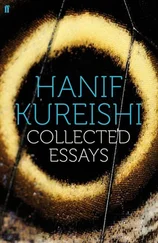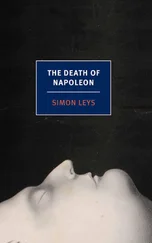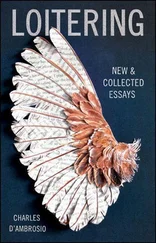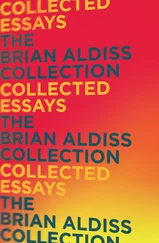There is something more important than a finished work of art: it is the spiritual process that preceded it and guided its execution. The poet Tao Yuanming (372–427) used to carry everywhere with him a zither without strings, on which he played mute music: “I only seek the meaning that lies at the heart of the zither. Why strain myself to produce sounds on the strings?”
The finished work is to the spiritual experience of the artist as the graph recorded by the seismograph is to an earthquake. What matters is the experience; the work itself is a mere accidental consequence, a secondary result, a visible (or audible) leftover — it is nothing but “the imprint left perchance in the snow by a wild swan.” This is the reason why sometimes the ink of the brushstroke, the sound of the musical note are divested of part of their material substance; they are thinned out in order better to reveal the actual gesture that originates and underlies them. (To achieve this result in painting and calligraphy, the brushstroke is applied with an ink load that is deliberately insufficient; in this way, the ink mark is striated with “blanks” that show the inner dynamics of the stroke; this technique is called fei bai , which means “flying white.” A similar effect is found in music, when the sound of the fingernail modulating the vibrato on the string becomes louder than the original sound of the note.)
Literature, too, has its “blanks.” Sometimes they function as hinges for the composition; sometimes they enable the poem to suggest the existence of another poem that lies beyond words. To a degree, Western literature also knows these two uses of emptiness. A good illustration of the latter one was provided by Virginia Woolf when she presented Vita Sackville-West with what she called her best work — a splendidly bound volume, made purely of blank pages. As to emptiness used as a compositional device, Proust very subtly describes how Flaubert handled this technique: “To my mind, the most beautiful thing in Sentimental Education is not a sentence, it is a blank… [by which Flaubert finally] rids the narrative of all the deadwood of storytelling. He was thus the first writer who succeeded in giving it a musical quality.”[18]
In turn, Proust’s observation was well commented upon by Maurice Nadeau: “Proust noticed it: the ‘blanks’ in the narrative of Sentimental Education as well as in Madame Bovary are their supreme achievement… At every subtle turn of Emma’s fate, whenever a secondary narrative accompanies the main story, we encounter this ‘unsaid.’ The same current pervades objects and consciousness, the material world and the psychological world exchange their respective qualities; reality and the expression of reality merge into one single totality that rests upon ‘the inner dynamics of style.’”[19] The Flaubertian notion of “inner dynamics of style” irresistibly calls to mind the Chinese concept of qi ; it should be observed that it is precisely emptiness that provides the best conductor for this “current.”
Void is the space where the poem-beyond-the-poem can develop; Chinese poetry has various devices to create it. Thus, for instance, at the beginning of the famous four-line poem by Wang Zhihuan describing the immense scenery that can be seen from a tower at the mouth of the Yellow River, the first two verses outline the widest possible horizon:
The sun sinks beyond the mountains
The Yellow River flows into the ocean…
At this point the reader feels that the poet has reached the utter limit of his vision; actually, the real function of these two verses is merely to tighten a spring whose sudden release, at the end of the poem, is going to launch the reader’s imagination into the infinitely vaster spaces of the unseen:
However, if you wish to see an even greater scene
Climb one more story!
The last verse is not a point of arrival, but a point of departure. This “trampoline effect” is often used by poets, especially in the four-line poems whose extreme compactness (the entire poem may have twenty syllables only) is thus prolonged with an infinite echo.
Another method consists in building the poem around a central core of emptiness, where a truth resides that cannot be approached or expressed. The traditional metaphor used for this purpose is that of the unsuccessful attempt to meet a hermit-sage who possesses the ultimate answer. The hermit’s presence is real and near — it is attested by various clues, even by his direct messengers — and yet he himself remains invisible and unreachable. A good thousand years before Kafka’s Castle , Jia Dao summarised this myth in a well-known four-line poem:
Under a pine tree, the boy-servant, having been asked where his master was,
Answers: “He went to collect medicinal herbs;
I only know that he is somewhere in this mountain.
Where? Mist hides everything.”
Since the essential point is beyond words, a poem can only talk beside the subject — it describes a desire. Thus, in Tao Yuanming:
I built my hut among people
And yet their noise does not disturb me.
How is this possible, I ask you?
Solitude can be created by the mind, it is not a matter of distance.
Plucking chrysanthemums at the foot of the hedge,
I gaze toward the faraway mountains.
At dusk the mountain air is beautiful,
When birds are returning.
Truth is at the heart of all this:
I wish to express it, yet find no words.
The same theme found a new expression with Wang Wei:
In the evening of life, I am only fond of silence;
I do not care anymore for the business of the world.
Having measured my own limits,
I merely wish to return to my old forest.
The wind that blows in the pine trees plays with my belt.
In the mountain, I play the zither under the moon.
You ask what is the ultimate answer?
It is the song of a fisherman sailing back to shore.
Any work of art — poem, painting, piece of music — plays the part of a “fisherman’s song”: beyond the words, forms and sounds that it borrows, it is a direct, intuitive experience of a reality that no discursive approach can embody.
In our time, the subtlest of all modern critics, Zhou Zuoren (1885–1968), summarised in one pithy sentence this living tradition of which he himself was a product: “All that can be spelled out is without importance.”
This axiom — needless to say — is also valid for essays that deal with Chinese aesthetics.
1983
* Gauss Seminars in Criticism, Princeton University, 1980.
† See “Lies That Tell the Truth.”
The Chinese Lesson
IN THE catalogue of an individual retrospective held a year and a half ago at the Stedelijk Museum in Amsterdam, there is a striking statement by the painter to whose memory the exhibition was devoted. At a crucial turning point in his career, the artist in question sent a batch of recent paintings to a friend and explained to him: “The next lot has to be better and I just don’t feel capable of being better yet… I have the awful problem now of being a better person before I can paint better.”
No, it wasn’t a Chinese scholar-painter from another century who wrote these lines. It was in fact Colin McCahon (1919–87), an important New Zealand painter of our age. The author of the catalogue, Murray Bail — a true connoisseur of Western art — in quoting this statement could not hide his puzzlement: can one imagine Michelangelo or Rubens, Ingres or Delacroix, Matisse or Picasso making such an extraordinary statement?
For traditional Chinese aesthetes, on the other hand, such a notion goes without saying, and McCahon was doing little more than repeating a truth which, in their eyes, should be obvious to any serious artist. How the self-taught New Zealand painter, locked away in the isolation of his far-off land, had come to develop, without realising it, such a “Chinese” view remains an enigma which we will not try to elucidate here. We will simply note that he read a great deal and that since the middle of the twentieth century, numerous philosophical and aesthetic elements of Chinese and Japanese thought have been filtering into Western consciousness via countless works of vulgarisation, indeed even best-selling novels. Remember, for example, Robert Pirsig and his famous Zen and the Art of Motorcycle Maintenance (an astonishing best-seller in the ’70s, the book, even today, retains its freshness and originality; it bears re-reading): “You want to know how to paint a perfect painting? It’s easy. Make yourself perfect, and then just paint naturally.”
Читать дальше
